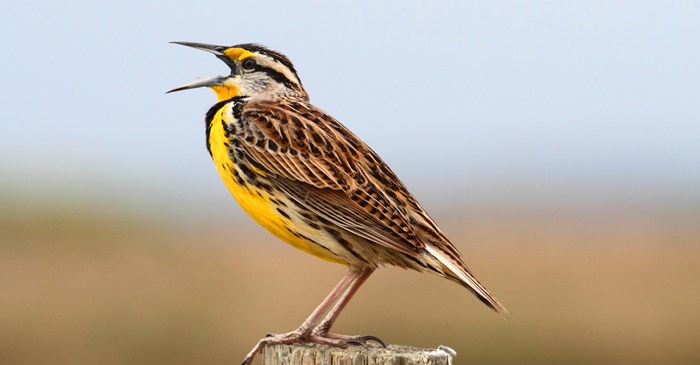If you grew up in farm country or the open range, the watery song of the Meadowlark might bring it all back to you. In far northern states, its return in the spring is something worth celebrating.
There are seven distinct species of Meadowlark, but here we’ll focus on the Western Meadowlark and the Eastern Meadowlark, which have many similarities. Both are brown spotted songbirds with breasts of bright yellow with a black “V,” and long pointed bills capable of thrusting into the ground to grab insects. Despite the name, these are not larks. They’re actually related to blackbirds and orioles.
The Western Meadowlark has won over many hearts, with six states (Kansas, Montana, Nebraska, North Dakota, Oregon and Wyoming) calling it their state bird. Only the Northern Cardinal has staked more state bird claims.
Habits and habitat
Most small songbirds hop on the ground, but the Meadowlark walks. Many ask why some birds hop while others run or walk. A simple answer: It depends where the species gets most of its food.
A hopping bird is most likely a tree (or shrub) bird, and hopping is just an efficient way of navigating twigs and branches. Walking birds are ground feeders, and the Meadowlark searches the ground and the grasses for insects.
Where to find them
Most Western and Eastern Meadowlarks are "year round" birds, but those that spend summers in far northern states will migrate short distances south where food is more abundant.
They’re perhaps easiest to find in spring, when the male Meadowlarks are busy singing, displaying their feathers and getting into “jump fights” with male rivals. For every male, there are two to three females, who build domed nests in tall grasses and ground depressions (including in hoof prints).
In the winter, when insects are scarce, they’ll search for grains and seeds and may even visit a bird feeder. If you see a winter flock in your area, be sure and choose a mix that features cracked corn and hulled sunflower seeds, such as Lyric Supreme Mix.
